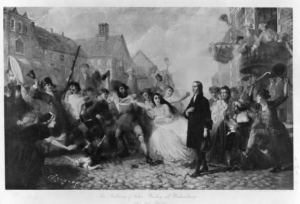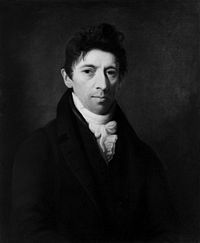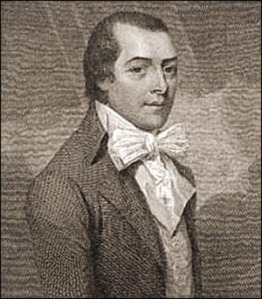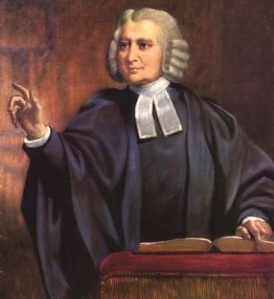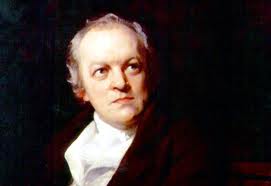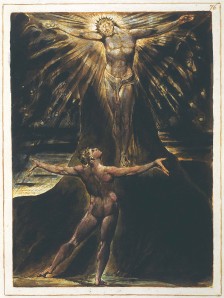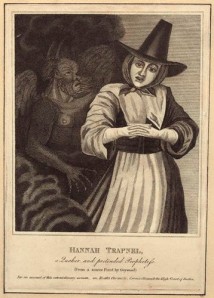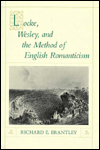Agnes Collinson Bulmer was born on August 31, 1775 in London, the third daughter of Edward and Elizabeth Collinson of Lombard Street. Her father was an early convert to Methodism while Elizabeth Collinson’s parents were themselves Methodists and friends of Wesley (Stevenson 497). Edward Collinson was one of the trustees of the prestigious City Road Chapel and a prosperous London tinman and ironmonger (Stevenson 250, 497). He and Elizabeth were personal friends of John and Charles Wesley and the young Agnes was baptized by John and received her first class ticket from him in December 1789. She was placed in Hester Ann Rogers’ class in the City Road society, where she would remain a member for the rest of her life. Like most London Methodists of this time, however, the Collinsons were also faithful adherents to the Church of England – a practice that Agnes never fully gave up over the course of her life. As her friend and later editor William Bunting put it, the Collinsons were “equally allied, like most of the first followers of Mr. Wesley, to the established Church of England, and to the Society of ‘people called Methodists’” (Letters v), and the two were not seen as mutually exclusive. Also in common with a growing number of London Methodists, the Collinsons were decidedly middle class and the young Collinson girls appear to have received what was, by the standards of the age, an excellent education. This, combined with her natural curiosity, led the young Agnes Bulmer to read widely and voraciously, a practice that she would continue over the course of her life.
By the age of twelve, Bulmer was reading Edward Young’s Night Thoughts, a favorite of Wesley and evangelicals more generally, and this work was to have a tremendous influence on her own poetry. In 1788, at the age of fourteen, Bulmer published her first poem, “On the Death of Charles Wesley,” in the Arminian Magazine:
Ah happy man! thy griefs are passed away; Thy struggling soul to heaven has took its flight: To bliss eternal winged its wondrous way, And safety lodged in realms of pure delight Summoned by God to join the heavenly band, And dwell with Him in everlasting rest Thou now art happy in Immanuel’s land, Where grief and pain shall never more molest. But ah! how many will thy loss deplore? Unmindful that ‘tis eternal gain; They mourn their Friend so quickly gone before, Forgetting he is gone from toil and pain: Forgetting he is gone to joys on high, And join the angelic hosts in heavenly lays Far, far above yon bright ethereal sky To aid the concert of eternal praise. And now for every pang he felt below, His soul receives a full, and sure reward; While heavenly joys in streams of glory flow, And Jesus crowns him with divine regard. Then why should Death appear so great a foe? Why with such terror is the subject fraught? Since he relieves the just from every woe, And brings them bliss, beyond the reach of thought! (AM 11:557)Though the subject is undoubtedly conventional, the execution is of the poem is surprisingly solid, especially for a fourteen year old. Even here we see evidence of a lively intellect at working, already writing about themes that will come to occupy her adult life – Christian service, pain, death, and the purpose of human life on earth. The poem is all the more interesting in that Bulmer is eulogizing a poet whose role as religious bard she herself would most fully carry on into the nineteenth century. John Wesley sent the young Agnes Collinson a personal note thanking her for this poem and cautioning the prodigiously talented child to “Beware of pride; beware of flattery; suffer none to commend you to your face; remember, one good temper is of more value, in the sight of God, than a thousand good verses. All you want is to have the mind that was in Christ, and to walk as Christ walked.” It was characteristic Wesley, but the simple fact that he took the time to respond to verses from a child indicates that he was impressed by the young woman’s talent and promise.
The young Bulmer continued to write poetry even as she became more and more involved with the Methodist society at City Road. She was a member of Hester Ann Rogers class and during this time came to know the older Elizabeth Richie Mortimer, whose biography she would later author, and Sally Wesley, Charles Wesley’s only daughter. These three women were at least fifteen years older than Bulmer and very close to John Wesley. In fact, all three of these women attended Wesley at his death in 1791. Upon Hester Ann Rogers’ untimely death in 1793, Bulmer wrote an elegy titled Thoughts on a Future State, which was published with the 1794 edition of Rogers’ famous Account. Like her “Lines on the Death of Charles Wesley,” Bulmer once again takes up the subject of death and what happens to a Christian after death. In the Methodist tradition death was an especially important event as it provided an opportunity for the dying individual to testify of his or her faith to the end. Thus accounts of “holy dyings” in the ars moriendi tradition abound in literature by Methodists and Bulmer’s poetic take is particularly powerful.
In 1793, at the age of eighteen, Agnes Collinson married Joseph Bulmer, a London merchant and warehouseman who was also a member of the Methodist society. Joseph Bulmer was born at Rothwell, near Leeds, on May 16, 1761. Though his mother was religious, she died when he was nine and it is unclear whether she was a Methodist or not. He grew up in Leeds, where he served and apprenticeship, and early on came to associate with the Methodists there. In 1780 he moved to London where he apparently became quite prosperous (Joseph Bulmer 818). His influence within London Methodism is evidenced by the fact that over the course of his life he served as the treasurer and one of the stewards of the important City Road Chapel, London Circuit Treasurer, Treasurer of the Methodist Missionary Auxiliary Society for the London District, General Treasurer of the Children’s Fund, a member of the Preachers’ Friend Society along with several other non-Methodist charities (819). All of these positions would have been bestowed on him not only because of his commitment to Methodism, but also due to his success in business affairs and management of money. In fact Joseph Bulmer is regularly listed in the Methodist Magazines of the time period as a major donor to causes like the Children’s Fund and Missionary Auxiliary Society. For example, the April 1839 issue of the Wesleyan Methodist Magazine lists Bulmer’s legacy to the Missionary Society at nearly 200 pounds (351). Clearly Agnes had come from the middle class and married into the middle class.
Agnes Bulmer and the Shifting Character of London Methodism
That the Bulmers were undoubtedly part of a very middle class, conforming version of Methodism is reflected in the fact that they quickly became friends with many of the leading lights of the second generation Methodists. As early as the autumn of 1795, Bulmer became acquainted with Dr. Adam Clarke (1760-1832), the prominent Methodist theologian, author of a influential Commentary on the Whole Bible and President of the Methodist Conference. His daughter, Anna Rowley, describes the meeting over forty years later:
She was then in the twenty-first year of her age; and, I have heard my mother say, was one of the most interesting young women she ever met with. I recollect her narrating to me her earliest impression respecting Mrs. Bulmer, in the following words: – “The first time I saw her was in the old chapel at Spitalfields; and so strong was the feeling on my mind towards her, that I could not help, at the close of the service, inquiring who the young lady was to whom I had felt so irresistible an attraction.” This was introduction enough. When they met on the next day they felt that they were not strangers. My father was equally pleased with her; and at that hour commenced a friendship which, built upon the only sure foundation, proved so strong, so rational, and so abiding, as to brace unhurt the varied trials of nearly forty years. (Rowley 804)
This meeting was the beginning of an intellectual friendship that lasted until Clarke’s death. He once commented that “That woman astonishes me. She takes in information just as a sponge absorbs water. The nature of the subject seems to make little difference; for whether it be philosophy, history, or theology, she seizes upon it, and makes it all her own” (Rowley 804). Clarke and Bulmer frequently exchanged books with one another and sent each other lengthy letters discussing philosophy, theology, and history.
Also included in this circle of friends was Richard Watson, another important Methodist theologian and President of the Conference; Joseph Benson, the editor of the Methodist Magazine; Jabez Bunting, the de facto leader of Methodism for much of the early nineteenth century; and William M. Bunting, his son. As William Bunting wrote in his introduction to Bulmer’s published Letters, she was notable in this circle for her:
keen, irrepressible, and, if we might so say, passionate intellectuality; a thirst for all truth, fully as evident as was her pleasure in imparting what she had already apprehended of its facts and principles; a surprising copiousness and saliency of thought on any question which incidentally excited it; a range of information, which carried her at once into the details, far beyond most with whom she conversed; and then, on religious subjects, a perfect sublimity of feeling, an adoring piety, and a manner even in speaking of the present God, as if every breath were incense, and every utterance an act of worship, or of consecration (xxiv-xxv).
Clearly Agnes Bulmer was the intellectual equal of these important men. She could, and did, stand up to them in conversation and arguments on all subjects. As another member of this circle remarked years later in a reminiscence in the Wesleyan Methodist Magazine, “In discussion she was a match for men like Adam Clarke, Jabez Bunting, and Richard Watson; her forte being the resolute insistence on precision and consistency. ‘Define your terms, Sir,’ she would say to any one who tried to draw her into an argument” (Gregory 850). This clear, lively, and precise type of thinking is evident in her letters, both to these men and others. While many spiritual letters written during this time by Methodist women tended to be full of platitudes and common Methodist truisms, Bulmer’s are alive with a clever and searching intellect, always seeking to analyze a situation or argument and provide clear and cogent thoughts on the matter at hand.
On the other hand, though most of her male contemporaries seem to have viewed Bulmer as their intellectual equal, every one of her biographers felt the need to qualify this fact by playing up her “feminine” and “domestic” qualities, often immediately after praising her “masculine” intellect. William Bunting is perhaps the worst offender for, after offering the effusive praise of her intellect quoted above he goes on to remark that “These qualities… were set off by a most feminine delicacy of sentiment, yet suavity and charmingness of demeanour; by a cheerfulness, soft, quiet, and lambent as the fire-shine on the hearth around which we met her… and by the utmost shrinking, in practice and in taste, from all the airs and annoyances of a teaching or a talking female” (xxv). Elsewhere he comments on her “masculine robustness of intellect, with none of the affectation of masculine manners” (xvi). Clearly Agnes Bulmer is an exceptional woman, but she is chiefly exceptional (in Bunting’s mind) for the skilful way she blends feminine grace and sociable conversation around the hearth with a “masculine” intellect which is at the same time not threatening because she seems so “feminine,” according to the standards of the age.
This might be expected of Bunting, but similar sentiments are found in memoirs by both of Bulmer’s female biographers. Anna Rowley, for example, comments that “as a wife, her wisdom and influence were so exercised as to contribute in every respect to the honour and comfort of her husband” (807), while Anne Collinson lauds the way her sister balanced intellect pursuit and domestic duty:
With a heart capable of the warmest affection, she possessed an uncommon degree of prudence, and employed the great influence which she had over him, for the best of purposes, and was truly his fellow-helper in the road to Zion. If she had a wish to shine, it was in his sight; and he in his turn felt proud and delighted at her intelligent and unassuming manners. A new sphere of duties and employments being thus opened to her, she assiduously applied herself to move regularly in it, and never permitted her love of study to intrench on the peculiar duties of her sex. Her household arrangements evinced her well-disciplined mind; – every thing was in order, and she herself was never in a hurry, though always employed (8-9).
Here as well is a separate “sphere of duties” that Bulmer was meant to balance with her scholarly activities. Collinson thinks it is vital to point out that, though he sister excelled as an intellectual she never let this get in the way of her “domestic duties,” and as late as 1889 Annie Keeling felt it necessary to remark that “The careful heed with which she fulfilled every domestic duty, interfered neither with her intellectual nor her spiritual progress” (151). These comments are especially difficult to square with Bulmer’s role as a very public Methodist author and intellectual. Though it is clear that others want to frame her as a domestic paragon of virtue who wrote on the side, it is far from clear that Bulmer viewed herself this way. Though it is perfectly clear that she loved her husband deeply and took pleasure in working with him, no writing of her own has survived that indicates she saw a tension between intellectual and wife – in all likelihood she saw the two vocations as perfectly compatible.
This tension between Bulmer’s roles as public intellectual and author, on the one hand, and wife, on the other, is indicative of a larger struggle over women’s roles in Methodism during the beginning of the nineteenth century. After the death of John Wesley in 1791 intense battles were also fought within Methodism, especially over the issue of women’s preaching. Though, as we have seen, Wesley clearly sanctioned women’s preaching on the grounds of an “extraordinary call,” issued Sarah Mallit with a license to preach, and actively supported the independent work of women like Mary Bosanquet Fletcher, Sarah Ryan, and Sarah Crosby, his was always a minority opinion within the movement. Even his support was qualified and, with his death, women preachers lost their most powerful defender. The Methodist Conference (made up entirely of men) moved quickly to circumscribe this activity by first discouraging women’s preaching and then by outright banning in 1803. Often prominent women preachers like Sarah Mallit, Mary Barritt Taft, and Mary Bosanquet Fletcher simply ignored this prohibition and, often with the complicity of their circuit leaders, continued to preach well into the 1840’s. Likewise women’s preaching was common in the Primitive Methodist Connection. However the attitude of the Methodist leadership was clear and as the century progressed the roles for Methodist women became increasingly limited to the instruction of other women and children and visiting the sick and dying or what were considered “proper” domestic roles. The London “Church Methodism” of City Road Chapel would have thus been far more inclined than East Anglian Methodism (where Sarah Mallit preached) to embrace prohibitions on women’s preaching activities. I all of this Adam Clarke’s own Commentary played an influential role in that it codified many of the restrictions on women’s ministry and relegated them to the domestic sphere through conservative interpretations of disputed Biblical passages.
Furthermore, the focus on domesticity and sociability in these comments about Bulmer indicate the extent to which Methodist sociability itself, especially in London, was changing. Whereas during the early days of Methodism sociability had been largely defined by the single-sex class and band structure, in the London Methodism of the early nineteenth century this was fast becoming a relic of the past. Though the structure still existed in name well into the nineteenth century, in practice the rigorous type of self examination that occurred in the bands earlier in the movement’s history began to disappear in favor of a more middle class sociability. The Bulmers and their circle are an excellent example of this. As her sister, Anne Collinson, put it in her Memoirs of Agnes Bulmer, “Her manners were cheerful and animated, though never frivolous; and she felt social intercourse to be one of the chief blessings of this changeful life” (9). While Agnes herself advises her brother in a letter that “A little recreation is a necessary relief from the labour of the study; and, in a well-regulated intercourse with the world, and observing mind will learn many lessons which his book would teach him in vain” (20). Likewise William Bunting remarks on Agnes Bulmer’s charming sociability and goes on to state that “We do not think that the talent of conversation, as it is called, is either cultivated or valued sufficiently by the generality of religious people. The fire-side circle was considered by our late accomplished friend as one department of Christian opportunity” (xxiii). These sentiments, though common in the nineteenth century are a far cry from the early days of Methodism. Though John Wesley certainly endorsed engaging with the world, he had little patience for social convention or polite standards of sociability. His Methodists were to be busy and active and thus have little time for fire-side conversation. That this was clearly important to Methodists like Agnes Bulmer and William Bunting indicates that the social terrain of Methodist – especially in London – was changing and that it was now the middle class gathering that superseded the noisy class meeting.
This shift from noisy movement to middle class institution is intimately connected to the history of the London City Road Chapel, to which Joseph and Agnes Bulmer, along with many of their notable friends, belonged. City Road had been constructed under Wesley’s supervision in 1777 to replace the old Methodist headquarters at the Foundery (Heitzenrater). Constructed on the same piece of ground as the Foundery and across the street from the Dissenting burial grounds at Bunhill Fields, City Road in many ways represented an entirely new phase of Methodism. Though Wesley took pains emphasize that the construction of the chapel did not represent a separation from the Church in the sermon he preached when the foundation was laid, in practice the chapel acted as a further step towards irregularity. Architecturally speaking the chapel was a departure from the simple octagonal structures that characterized early Methodism – it was constructed to resemble a more traditional church and living quarters were built to accommodate Wesley while in London. Completely outside of diocesan control, nevertheless during John Wesley’s lifetime the pulpit at City Road was restricted to Methodist preachers who were ordained in the Church of England and in practice Charles Wesley essentially became the equivalent of the parish priest there until his death in 1788 (Stevenson 76-77). Though John Wesley refused to allow the sacraments to be administered there during his lifetime after his death City Road was one of the first places that they were administered outside of Church hours.
That Charles Wesley was so prominent in the early history of City Road actually says much about the shifting character of Methodism towards the turn of the century and the increasing tensions within the movement. Much to his brother’s chagrin, Charles had stopped itinerating in 1756 in favor of settling in Bristol with his wife Sally and his growing family. By 1778 the entire family had moved to London, in large part to promote the musical careers of his prodigiously talented sons Charles Jr. and Samuel Wesley. That City Road opened its doors around this time thus provided a natural outlet for the man who still wielded tremendous influence within the movement. Charles was always the more orthodox of the two brothers and viewed the lay preachers that his brother promoted with suspicion. His control of City Road was a way for him to reshape the character of the movement from its most prominent pulpit. In general the London Methodists during Charles’ lifetime tended to be more affluent, more conservative, and more observant “Church Methodists.” Though some of this changed after Charles and John’s death, nevertheless London Methodists (including the Bulmers) tended to be far more observant of the practices of the Church of England than provincial Methodists (Lloyd 227-229). Furthermore, more and more middle class merchants and wealthy businessmen were becoming influential in the Methodist movement. The list of trustees of City Road Chapel is disproportionately made up of skilled tradesmen (like Edward Collinson), merchants (like Joseph Bulmer), and bankers (Stevenson 250-251). Though it is safe to assume that the wider membership was more diverse, there can be little doubt that City Road was becoming decidedly middle class.
Bulmer’s Later Life and Writing
By all accounts the marriage between Joseph and Agnes was a happy one which closely resembles the ideal of the companionate marriage being promoted by writers as different as Mary Wollstonecraft, Hannah More, and Jane Austen. Agnes was clearly Joseph’s intellectual equal in every way and there is little evidence that he hindered her in her work. In fact it is quite clear from the evidence that in many ways Agnes and Joseph Bulmer worked as a team – bound together by their commitment to the Wesleyan Methodist Connection. For example, in a poem to her husband written on their ninth wedding anniversary, Bulmer beautifully frames their marriage in terms of companionship and a mutual commitment to be God’s agents together:
February 7th, 1802
While some are doom’d to bear the load of life In single solitude, without the aid, The cheering aid of Friendship’s social power, Like lonely trees upon a blasted heath, Exposed to all the beatings of the storm;- While others, stung by disappointment, feel The bands design’s for comfort, peace, and love, To be the cords of bondage to their souls;- Say, my loved friend, what happiness is ours, That we can greet this morning with a song, A song of praise, to that all-gracious Power, Who in the counsels of his matchless love, First form’d our union, and then kindly join’d our hearts and hands by his own sacred ties! Obtaining strength by him as years increased, More and more firmly have our souls been bound; And spared by grace, this ninth revolving morn Finds us more join’d in cordial, constant love, Than we first before the altar bow’d. Hail! welcome morn! thy glad approach we greet, And bless the as the happiest of our lives. Still may thy sun rise cloudless; and the years That yet may roll their courses o’er our heads, Increase, mature, and sanctify our love. While, as we travel o’er life’s varied path, Upheld by mutual tenderness, we rise Above the storms that sometimes cross this way, And, by participation sweet, receive A richer pleasure from its brightest scenes; While humble gratitude, with careful eyes, Noting the boundless gifts of Love Divine, Leads us together to the mount of praise, To adore the Author of our numerous joys.For Bulmer marriage is a means through which God empowers men and women to serve him better in the world. It is God who “First form’d our union, and then kindly join’d / our hearts and hands by his own sacred ties! / Obtaining strength by him as years increased,” and it is God who makes them more useful together than they could be one their own. Though, as we will see, others tried to paint Bulmer’s marriage as the ideal of a Christian woman’s submission to her husband it is clear from this poem and others like it that Bulmer saw her marriage as more of a partnership in Christ. This also represents a distinct shift in how Methodist women viewed marriage. Whereas before a woman like Sarah Ryan or Sarah Crosby could travel and preach by themselves and saw no problem with it, increasingly roles for women were defined by marriage. Though widows like Sarah Mallit in fact outlived Bulmer, they were increasingly a dying breed, especially after the prohibition on women’s preaching in 1803. If women were to find a role within Methodism it was increasingly within a domestic space – though women like Agnes Bulmer continued to trouble this dynamic.
Between 1793 and 1822 Bulmer was mainly employed in the regular activities of a middle class Methodist woman who was under no obligation to work. She was a Class-Leader at the City Road Chapel, visited the sick, dying, and poor, and spent much of her time writing. She also participated in a weekly Ladies Working Society which, in addition to discussing religious subjects, made garments for the assistance of the poor (Stevenson 190). Her friend Anna Rowley notes that Bulmer was “naturally retiring and timid,” and thus “had great difficulties to overcome in the performance of those duties which brought her at all into contact with other persons; yet for many years she employed herself in various departments of public usefulness” (808). Her sister confirms this, remarking that she was “not only a contemplative, she was also an active Christian” and that:
For above thirty years she was a Class-Leader among the Wesleyan Methodists in London, and deeply felt the responsibility of the situation she filled. Those can best appreciate the value of her advice who enjoyed its advantages in those religious meetings, which, to use her own expression, “provide for the minuteness of individual instruction, and adapt themselves to that variety of experience which as distinctly marks the spiritual as it does the intellectual or material man.” (74).
This work as a class leader also extended into her publishing activities during this period, in which she published poems and essays to both the Methodist and Youth’s Magazines and began publication of her Scripture Histories, adaptations of Bible stories for the use of children (Collinson 27). Though intended for the young, Scripture Histories are in many ways prose studies of the Biblical episodes that she would later render in poetic form in Messiah’s Kingdom. The fact that she wrote them for a younger audience, however, indicates both that she was (like Hannah More) alive to the need for good children’s instructional literature and at the same time being pigeonholed into teaching only women and the young – the proper role for pious women. That the Scripture Histories are in many ways theologically sophisticated is only one further evidence of the way Bulmer was able to use a genre that was open to her as a means of opening a space for scholarly women.
On July 23, 1822 Joseph Bulmer died after a long illness and two years later her mother followed him. This was a deep period of grief for Bulmer which she expressed primarily through poetry that not only acted as an outlet for her grief, but also framed the deaths in light of the Methodist hope of an after-life. Especially poignant is her Memoir of a Lyre Resumed: or A Requiem at the Tomb of a Beloved Friend, and Songs in the Night of Affliction, which beautifully capture her feelings following her loss. One in particular, “Pensive Musings Composed on a Journey, July 1823” is evocative of the type of synthesis between emotion and piety that characterizes her poems. Writing almost a year after her husband’s death, she uses nature as a canvass upon which the express her feelings – a technique that she will later master in Messiah’s Kingdom. She does not shy away from exhibiting sorrow, in fact she embraces her grief in a way that is unusual for an evangelical poet – telegraphing it onto the landscape before moving on to describe memories with the absent loved one that mirror her current surroundings. Death is a very real presence in this poem and though, by the end she is looking forward to a reunification in heaven, the separation is very real and very felt.
In 1835 Bulmer turned to another genre, publishing the Memoirs of Elizabeth Mortimer, which memorialized the Methodist “mother in Israel” who had been a close friend of John Wesley’s and a long-time member of the City Road Congregation. Bulmer had befriended the older woman and from her learned about the early days of Methodism. The Memoirs is unique in that it is one of the few biographies of an early Methodist woman written by a woman and it would go on to become Bulmer’s most famous and most published book on both sides of the Atlantic. It is also notable for its Introduction, which clearly lays out a theory Christian biography, calling it “a treasure of no ordinary value; [which]… applies the proper test to principles; and calls forth experience to vouch for truth” (12). This appeal to experience to vouch for truth was uniquely Methodist. Here Bulmer applies Wesley’s experiential theology to the subject of biography – working from the empirical details of experience upwards to the higher truths of religion. It is this process that sets the Memoirs apart from other account of holy women, including the Memoir written about her by her sister. By applying experiential theology to her work Bulmer is able to eschew simple hagiography and construct a picture of Elizabeth Mortimer that, while biased, nevertheless serves the interest of a larger truth.
However it was her epic, Messiah’s Kingdom, that Bulmer likely considered her most important work. Published in 1833 by Rivington, Messiah’s Kingdom was the result of over nine years of work begun during her early widowhood and represented the culmination of all her religious and poetic interests. Spanning twelve long books, its scope is tremendous, beginning (like Milton) with the fall of man and proceeding through the major events of the Old and New Testaments, the establishment of the Church, the Reformation, and up to the establishment of the British empire (which Bulmer views as God-ordained, especially in its missionary endeavors), and the evangelical fight against slavery and other social ills. As Bulmer herself expressed it, the main purpose of the work was to delineate the evangelical salvation message as presented in the grand narrative of scripture:
The work is not a poetical version of Scripture History; a developement of the great scheme of human salvation, through a Divine Incarnate Redeemer. This, from its first announcement to its final consummation, is pursued through its various forms of manifestation, – in the Patriarchal, Levitical, Prophetic, and Christian Revelations. And the great moral of the poem is, (as the in the first book enunciated,) “Propitiation through sacrificial blood; typically, at first, under the introductory dispensations by the blood of slain beasts; and finally, and really, by the offering up of the great Antitype, “The Lamb who taketh away the sins of the world.” In the prosecution of this great subject my line of order has been to follow the course of its developement in the Sacred Scriptures, – the spring-head of my inspiration; and time, place, and circumstance have been subordinated to this primary design (Collinson 103).
Its overriding theme is thus the establishment of Christ’s kingdom on earth, first through his redemptive work on the cross and then through the actions of the individual Christian in society.
By any account this was a monumental achievement – running to over 14,000 lines, it is certainly one of the longest poems of the nineteenth century and perhaps the longest poem ever written by a woman. It was the work of her widowhood and, as she put it, represented the role poetry played in her life, especially during seasons of affliction:
I am under more than common obligations to that gentle art, which almost in childhood taught me to give expression to thoughts and feelings unconnected with a merely sensitive world, and which otherwise might not have been seriously cherished; and I owe much also to its soothing influence in seasons of deep sorrow, when I was enabled to resort to it as an alleviating and refreshing occupation, during days and years of pensive and almost melancholy depression (Collinson 118-119).
It is impossible to treat the poem holistically in this space – however I have attempted to outline some of its major themes here and you can read the full text of the poem beginning here.
Agnes Bulmer died suddenly on August 20, 1836, just shy of her sixty-second birthday and exactly ten months before the accession of Queen Victoria to the throne. She had traveled to the Isle of Wight with several family members in the middle of August when she fell ill of an unknown complaint – several days later she was dead. Her funeral sermon was preached by her friend, the Rev. William M. Bunting, son of Jabez Bunting, President of the Methodist Conference and she was interred next to Bunting at the burial ground of the City Road Chapel, of which she had been a member her entire life. Her epitaph reads: “The sweet remembrance of the just / Shall flourish when he sleeps in dust” (Stevenson 498) and her obituary in the Wesleyan Methodist Magazine remarked, “Of retiring and modest habits, her mind, nevertheless, was well cultivated, and calmly elegant…. Even the list of those English females who have done honour to their sex, loses nothing of its luster by having her name inscribed on it” (15:807). Her works continued to be published long after her death and her one hymn, “Hymn for the Ancoat’s Methodist Chapel,” was a part of the Methodist Hymnbook well into the twentieth century. Its third stanza perfectly encapsulate her life and work:
We, like Jesse’s son, would raise A temple to the Lord; Sound throughout its courts His praise, His saving name record; Dedicate a house to him, Who, once, in mortal weakness shrined, Sorrow’d, suffer’d, to redeem, To rescue all mankind.References and Additional Resources
Primary Sources:
Bulmer, Agnes. Memoirs of Mrs. Elizabeth Mortimer. New York: Mason & Lane, 1836.
Bulmer, Agnes. Messiah’s Kingdom. New York: Waugh & Mason, 1833.
Bulmer, Agnes. Scripture Histories. London: Mason, 1837.
Bunting, William M, ed. Select Letters of Mrs. Agnes Bulmer. London: Simpkin & Marshall, 1842.
Collinson, Anne Ross. Memoir of Mrs. Agnes Bulmer. London: Rivington, 1837.
“Contributions to the Wesleyan Missionary Society.” Wesleyan Methodist Magazine 18 (April 1839): 351.
Gregory, Benjamin. “Notices of My Life and Times.” Wesleyan Methodist Magazine 13 (November 1889): 845-853.
Keeling, Annie E. Eminent Methodist Women. London: Kelly, 1889.
“Obituary of Agnes Bulmer.” Wesleyan Methodist Magazine 15 (Sept. 1836): 807.
“Obituary of Joseph Bulmer.” Wesleyan Methodist Magazine 1(December 1822): 818-821.
“Review of Messiah’s Kingdom.” Wesleyan Methodist Magazine 13 (May 1834): 357-376.
Rogers, Hester Ann. An Account of the Experience of Hester Ann Rogers. New York: Carlton & Porter, 1857.
Rowley, Anna. “Memoir of the Late Mrs. Agnes Bulmer.” 19 (Oct. 1840): 801-810.
Stevenson, George J. City Road Chapel, London and its Associations. London: Stevenson, 1872.
Secondary Sources:
Chilcote, Paul Wesley. Early Methodist Spirituality: Selected Women’s Writings. Nashville: Kingswood, 2007.
Heitzenrater, Richard P. Wesley and the People Called Methodists. Nashville: Abingdon, 1995.
Krueger, Christine L. The Reader’s Repentance: Women Preachers, Women Writers, and Nineteenth Century Social Discourse. Chicago: U of Chicago P, 1992.
Lloyd, Gareth. Charles Wesley and the Struggle for Methodist Identity. Oxford: Oxford UP, 2007.

